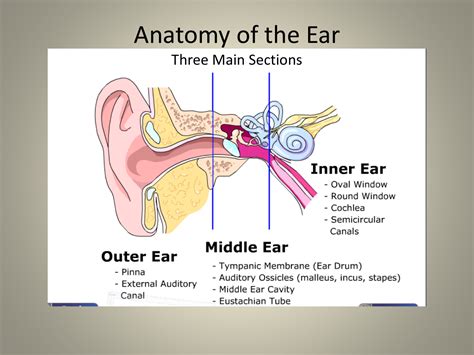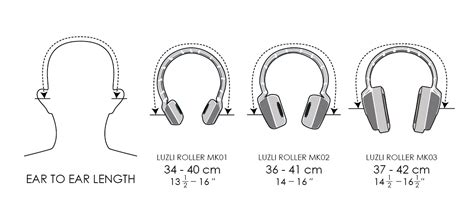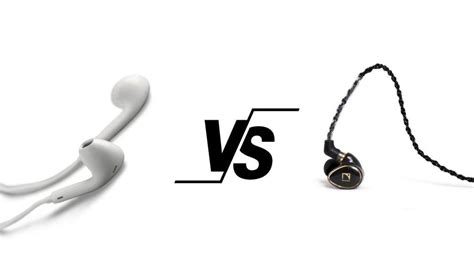For all the convenience and freedom that wireless earbuds provide, there is one persistent hurdle that many users face: the constant battle to keep these tiny audio devices securely in their ears. Despite their sleek design and advanced technology, it seems that these earbuds have a knack for slipping, sliding, and ultimately losing their grip on our ears.
Wearing wireless earbuds can be likened to threading a tightrope – a delicate balance between comfort and stability. The sheer nature of their wireless functionality, coupled with the lack of physical connectors, adds an extra layer of complexity to the equation. As we move, exercise, or even just nod our heads in agreement, these earbuds find themselves caught in a game of constant cat and mouse.
From joggers to commuters, the struggle is universal. Countless individuals have experienced that frustrating moment when their expensive earbuds unexpectedly take a premature plunge, descending from their ear canals like faltering acrobats. The all-too-familiar sensation of chasing after a rogue earbud before it meets the unforgiving ground has become a peculiar staple in the lives of wireless earbud users.
The Anatomy of the Ear: Understanding the Challenge of Wireless Earphones

When it comes to the issue of wireless earphones repeatedly slipping out of their intended position, a deeper understanding of the intricate anatomy of the ear becomes essential. This knowledge allows us to comprehend the unique challenges faced by these technologically advanced audio devices.
The Ear Canal:
At the heart of the problem lies the ear canal, a delicate and curved passageway connecting the outer ear to the middle ear. Its shape and structure play a crucial role in the ability of wireless earphones to remain securely in place. The ear canal, often referred to as the external auditory meatus, is lined with skin and protected by tiny hairs that fulfill important physiological functions.
Despite its intricate design, the ear canal can vary in size and shape from person to person, presenting a unique challenge for the manufacturers of wireless earphones.
The Outer Ear:
Another factor contributing to the issue is the outer ear, which consists of the pinna and the earlobe. The pinna, also known as the auricle, is the visible part of the ear that plays a vital role in capturing and directing sound waves towards the ear canal. It acts as a funnel, channeling sound into the ear and enhancing our ability to perceive auditory stimuli.
However, the unique shape and size of each person's pinna can influence how well wireless earphones fit and stay in place, making it necessary for them to be adjustable and adaptable to different ear shapes.
The Eustachian Tube:
The Eustachian tube, connecting the middle ear to the back of the nose and throat, is also relevant to the issue at hand. This tube plays a vital role in equalizing pressure between the middle ear and the outside environment, ensuring optimal hearing and maintaining the stability of the eardrum. If the Eustachian tube is not functioning properly, it can affect how wireless earphones feel and fit within the ear canal.
Understanding the complexities of the Eustachian tube can lead to innovative solutions to enhance the comfort and stability of wireless earphones for users with different physiological characteristics.
In conclusion, a comprehensive understanding of the anatomical intricacies of the ear, including the ear canal, outer ear, and Eustachian tube, is essential in comprehending the challenges faced by wireless earphones. By acknowledging and addressing these factors, future advancements in design and technology can be achieved to improve the fit, comfort, and overall user experience when using these increasingly popular audio devices.
Finding the Perfect Fit: Tips for Choosing the Right Earphones
Ensuring optimal comfort and secure fit while using earphones is crucial for an enjoyable listening experience. This section aims to provide valuable advice on selecting the ideal earphones that suit your needs, preferences, and ear shape.
1. Consider Your Ear Shape:
Every individual has unique ear shapes, and finding earphones that fit well can be challenging. Pay attention to the various earbud styles available, such as in-ear, on-ear, or over-ear options, and select the one that best matches your ear structure. Experimenting with different styles and sizes can help determine the perfect fit for you.
2. Evaluate Noise Isolation:
Proper noise isolation can enhance the listening experience and prevent the earphones from falling out. Look for earphones with features like noise-canceling technology or those with ear tips that create a seal inside the ear canal, minimizing external noise interference. This can provide a snug fit and prevent discomfort during activities such as exercising or commuting.
3. Check for Adjustable Features:
Some earphones offer adjustable features like interchangeable ear tips or adjustable bands. These features allow you to customize the fit based on your ear size and personal comfort preferences. Investing in earphones with these adjustable options can help achieve a secure fit and reduce the risk of them falling out during movement.
4. Consider Wireless Options:
Wireless earphones provide increased mobility and can be a suitable option for those who struggle with earphones falling out. Without the hassle of tangled wires, you can enjoy uninterrupted music and movement. However, ensure that the chosen wireless earphones still offer a secure in-ear fit to prevent any accidental dislodging.
5. Read Reviews and Seek Recommendations:
Before making a purchase, take the time to read reviews, watch videos, and seek recommendations from friends or online communities. Hearing from others who have tried different earphone models can give you valuable insights into fit, comfort, and overall performance. Their experiences can help you make an informed decision and find the perfect earphones for your needs.
By keeping these helpful tips in mind, you can navigate the vast array of earphone options and find the perfect fit that ensures comfort, stability, and an enjoyable listening experience.
The Role of Ear Size and Shape in Earphone Stability

In the realm of earphone stability, the dimensions and contours of our ears play a significant role in determining how well these wireless listening devices stay in place. The unique size and shape of our auditory organs may have an impact on the overall fit and comfort of earphones, affecting their ability to remain securely in our ears during various activities.
Unveiling the Impact of Physical Activity on Earphone Security
Exploring the Influence of Physical Activity on Earphone Stability
When engaging in physical activities, individuals often encounter the challenge of maintaining the stability of their earphones. This section aims to investigate and uncover the various factors related to physical activity that affect the security of wearing earphones. By understanding these influences, users can make informed decisions and find solutions to enhance the reliability and comfort of their earphones during active pursuits.
Sweat and Slippage: Battling Earphone Instability during Exercise

When engaging in physical activity, many people experience the frustrating issue of earphone instability, which can hinder their workout sessions. This problem can be attributed to two main factors: sweat and slippage. Understanding the causes and finding effective solutions to combat these issues is essential for individuals seeking a seamless and uninterrupted exercise experience.
To begin with, sweat plays a major role in earphone instability. As we exercise, our body temperature rises, causing us to sweat. This perspiration can accumulate around the ears and on the earphone's surface, leading to a slippery environment that hampers the earphone's grip. Consequently, the earphones may loosen, shift, or even completely fall out during physical activities, disrupting the listening experience and potentially causing annoyance or even safety concerns.
Additionally, slippage, resulting from inadequate earphone fit, exacerbates the problem. Ill-fitting earphones can be a result of various factors, such as the earphone design not conforming to the individual's ear shape or the absence of suitable ear tips. In the absence of a secure fit, the earphone's stability is compromised, making it more prone to dislodgement or slipping during vigorous movements. This lack of stability can distract and hinder individuals who are striving for an immersive and focused workout experience.
| Possible Solutions | |
|---|---|
| 1. Moisture-resistant earphones: | Investing in earphones specifically designed for sports and exercise can significantly reduce the impact of sweat on stability. These earphones are often equipped with moisture-resistant materials and features that repel sweat, keeping them securely in place. |
| 2. Earphone accessories: | Utilizing accessories such as ear hooks or wings can enhance stability during exercise. These add-ons provide additional grip and support, preventing earphones from loosening or falling out when engaging in rigorous activities. |
| 3. Proper earphone fit: | Ensuring a proper fit is essential for combating earphone instability. Experimenting with different ear tips sizes and materials can help individuals find the perfect fit that molds to their ear shape, providing a snug and secure fit throughout their workout sessions. |
| 4. Cable management: | Taking proactive steps to manage earphone cables during exercise can minimize interference and instability. Techniques such as securing cables behind the head or using cable clips can reduce the chances of tugging or tangling, thereby reducing the likelihood of earphones being dislodged. |
By addressing the challenges posed by sweat and slippage, individuals can enjoy a more stable and enjoyable audio experience during physical activities. Implementing the aforementioned solutions will not only enhance the overall workout experience but also ensure that the earphones remain securely in place, enabling individuals to focus on their fitness goals without any distractions.
The Impact of Earphone Design on Ensuring Secure Fit
In the quest to enhance user experience with portable audio devices, the design of earphones plays a crucial role in their ability to stay securely in place during various activities. The way earphones are constructed and shaped greatly influences their stay-in-place performance, ensuring a comfortable and uninterrupted listening experience for users.
1. Ergonomics:
One aspect of earphone design that significantly affects their stay-in-place performance is the consideration of ergonomics. The ergonomic design takes into account the shape and size of the human ear, allowing earphones to fit snuggly and securely within the ear canal. This ensures minimal movement and prevents slippage during physical activities or prolonged periods of use.
2. Earbud Material:
The choice of material for earbud construction is another crucial factor in earphone design. The material not only influences the overall comfort but also contributes to the secure fit of the earbuds. Soft and flexible materials, such as silicone, provide a more secure grip within the ear canal, reducing the likelihood of earphones slipping or falling out during usage.
3. External Stability:
Another design consideration for optimum stay-in-place performance of wireless earphones is external stability. The inclusion of features like ear hooks, ear fins or adjustable loops can greatly enhance the stability of earphones, providing additional support and preventing accidental dislodging even during vigorous movements.
4. Weight Distribution:
The distribution of weight in earphones also contributes to their ability to stay in place. Earphones with a well-balanced weight distribution, where the bulk of the weight is evenly distributed throughout the device, are more likely to remain securely in the ears. Proper weight distribution minimizes pressure points and discomfort, allowing users to enjoy their audio without worrying about constant adjustments.
5. User-Customizable Features:
With the varying shapes and sizes of human ears, earphone designs that offer user-customizable features provide an advantage in ensuring secure fit. Adjustable ear tips or multiple sizes of earbud attachments allow users to find the perfect fit for their ears, accommodating different ear sizes and shapes and reducing the likelihood of earbud slippage.
In conclusion, the design of earphones plays a critical role in their ability to remain securely in place during various activities. Factors such as ergonomic design, earbud material, external stability, weight distribution, and user-customizable features all contribute to ensuring a comfortable and uninterrupted listening experience.
Exploring the Connection between Earphone Material and Stability

When it comes to the secure fit of earphones, various factors come into play, and one key element is the material used in their construction. The stability of wireless earphones relies heavily on the properties and characteristics of the materials utilized in their design.
1. Impact of Material Flexibility
The flexibility of the earphone material is an essential aspect to consider in relation to stability. The level of flexibility determines how well the earphones conform to the contours of the ear, ensuring a snug fit. Materials with high flexibility enable the earphones to adapt comfortably to different ear sizes and shapes, minimizing the chances of them slipping or falling out during movement.
2. Considerations for Material Grip
Another crucial factor in determining earphone stability is the grip provided by the material. The texture and surface characteristics of the earphone material can enhance or hinder its ability to stay in place. The material should have sufficient traction to maintain a secure hold inside the ear, thereby preventing unwanted movement or dislodgment.
3. Role of Material Weight
Weight plays a notable role in earphone stability, and the material used affects this aspect. The lighter the material, the lesser the burden on the ear, which contributes to improved stability. Materials that are too heavy can exert pressure on the ear canal, leading to discomfort and potentially causing the earphones to fall out.
4. The Importance of Material Durability
Earphone materials must also possess adequate durability to withstand everyday wear and tear. If the material deteriorates quickly or loses its shape, it can negatively impact the stability of the earphones. High-quality and resilient materials are essential for ensuring prolonged stability and usability.
5. Balancing Material Comfort
While stability is a crucial aspect, it is essential to strike a balance between stability and overall comfort. The material should be soft and hypoallergenic, providing a pleasant experience even during extended periods of use. Finding the right combination of stability and comfort is key to optimizing earphone performance.
By understanding the connection between earphone material and stability, one can make informed choices when selecting wireless earphones, ensuring a snug and secure fit for an enhanced audio experience.
Troubleshooting Tangles: How Cord Management Affects Earphone Fit
Effectively managing the cables of your earphones can greatly impact the way they fit and stay in place while in use. This section explores the importance of proper cord management in relation to the overall comfort and stability of earphone wear.
The Psychological Aspect of Earphone Stability: Overcoming Discomfort

Ensuring earphone stability is not only about physical factors, but it also involves a psychological aspect that plays a crucial role in overcoming the discomfort experienced by users. Understanding and addressing these psychological factors can greatly contribute to a more satisfying and reliable earphone experience.
1. Adaptation and Habituation One of the key psychological factors affecting earphone stability is the process of adaptation and habituation. When individuals start using wireless earphones, they might initially find it uncomfortable or unfamiliar due to the absence of physical attachments. However, with consistent use and time, the brain gradually adapts to this new sensation, leading to a higher level of comfort and stability. |
2. Confidence and Self-Assurance Confidence and self-assurance are crucial psychological aspects when it comes to earphone stability. Users who doubt the stability of their earphones may subconsciously tense their ear muscles, leading to discomfort and the sensation of earphones falling out. Building confidence in the stability of the earphones can be achieved through proper fitting, adjusting the angle, and ensuring a secure seal, ultimately reducing discomfort and enhancing stability. |
3. Psychological Comfort Psychological comfort involves feeling at ease and relaxed while using wireless earphones. Factors such as earphone weight, materials, and design aesthetics contribute to the overall psychological comfort experienced by users. Ergonomic design and lightweight earphone options can alleviate perceived discomfort, allowing users to focus on their activities without constantly worrying about earphone stability. |
4. User Expectations and Satisfaction User expectations and satisfaction significantly influence the psychological perception of earphone stability. Users who have had negative experiences in the past may approach new wireless earphones with skepticism and expect them to fall out easily. Proper marketing and clear communication about the stability features can help manage user expectations and increase satisfaction levels, resulting in a positive psychological experience of earphone stability. |
The psychological aspect of earphone stability cannot be overlooked, as it intertwines with the physical aspects to create a holistic experience for users. By understanding and addressing the psychological factors involved, manufacturers can develop earphones that not only provide physical stability but also instill confidence, comfort, and satisfaction in the users, ultimately enhancing their overall earphone experience.
Emergence of New Technologies: Promising Solutions for Earphone Security
In the ever-evolving realm of audio technology, advancements continue to push the boundaries of what we thought was possible. As society becomes increasingly dependent on wireless devices, it is essential to address the challenges faced by users when it comes to the security of their earphones. This section explores the emergence of new technologies that offer promising solutions to enhance the stability and security of earphone usage, ensuring a seamless audio experience.
1. Secure Fit and Ergonomic Designs
One of the primary concerns associated with wireless earphones is their tendency to dislodge or fall out during physical activities. Fortunately, new technologies are revolutionizing earphone design, focusing on secure and ergonomic fits. These advancements introduce innovative methods, such as adjustable ear tips and customizable ear hooks, ensuring a comfortable and secure fit for users with varying ear shapes and sizes. By providing a reliable seal, these technologies minimize the risk of earphones slipping out, making them suitable for even the most rigorous activities.
2. Active Noise Cancellation and Environmental Awareness
Another significant challenge faced by users is the interference of external sounds during audio playback. With the emergence of active noise cancellation (ANC) technologies, earphones now offer the ability to block unwanted ambient noise, providing a more immersive listening experience. Additionally, new solutions integrate environmental awareness features, which allow users to maintain awareness of their surroundings while enjoying their audio content. By leveraging advanced algorithms and microphones, these technologies ensure both audio quality and situational awareness are prioritized, promoting safety and security.
3. Intuitive Touch Controls and Voice Activation
Traditional buttons and controls can be inconvenient, particularly when using wireless earphones on the go. However, new technologies enable intuitive touch controls and voice activation features, eliminating the need for physical buttons. These advancements not only enhance user experience but also improve earphone security. By minimizing the need for physical interaction, users can focus more on their surroundings, reducing distractions and potential risks, such as accidentally dislodging the earphones or losing awareness of their environment.
4. Enhanced Connectivity and Anti-Theft Features
Connectivity issues and the fear of losing earphones are common concerns among users. To address these concerns, new technologies offer enhanced connectivity options, utilizing Bluetooth advancements and intelligent pairing systems. Additionally, anti-theft features, such as proximity sensors and device tracking, provide added security by alerting users if their earphones are left behind or being tampered with. These features not only offer peace of mind but also ensure a more secure and enjoyable audio experience.
In conclusion, the emergence of new technologies opens up promising prospects in solving the challenges associated with earphone security. From secure fits to advanced noise cancellation and intuitive controls, these innovations aim to enhance the overall user experience and address the concerns users may face when using wireless earphones.
[MOVIES] [/MOVIES] [/MOVIES_ENABLED]FAQ
Why do wireless earphones tend to fall out of the ears?
Wireless earphones often fall out of the ears due to a lack of proper fit. The size and shape of the earphones may not be suitable for everyone, causing them to come loose. Additionally, vigorous physical activities or sudden head movements can dislodge the earphones.
Are there any specific factors that contribute to wireless earphones falling out?
Yes, several factors can contribute to wireless earphones falling out. One important factor is the ear shape and size of the individual. Another factor is the design and weight distribution of the earphones themselves. If the earphones are too heavy or the design puts too much pressure on specific areas of the ear, they are more likely to fall out.
How can I prevent wireless earphones from falling out while exercising?
To prevent wireless earphones from falling out during exercise, consider using ear tips that provide a better seal and fit. Additionally, using ear hooks or wings that secure the earphones to the outer ear can help prevent them from dislodging. Choosing earphones specifically designed for sports and physical activities can also provide better stability.
What should I do if my wireless earphones keep falling out even after trying different tips?
If your wireless earphones continue to fall out despite trying different tips, you may want to consider a different brand or model that offers a more secure fit. Some manufacturers provide additional accessories, such as different-sized ear tips or ear hooks, that can enhance the fit. It may be helpful to read reviews and seek recommendations from others who have similar issues.
Is there a way to customize the fit of wireless earphones to prevent them from falling out?
Yes, some wireless earphones offer customization options to ensure a better fit. This can include adjustable ear tips or variable sizes to accommodate different ear shapes and sizes. Some earphones also come with ear fins or wings that can be attached to provide additional stability. Experimenting with these features can help find the most comfortable and secure fit.




